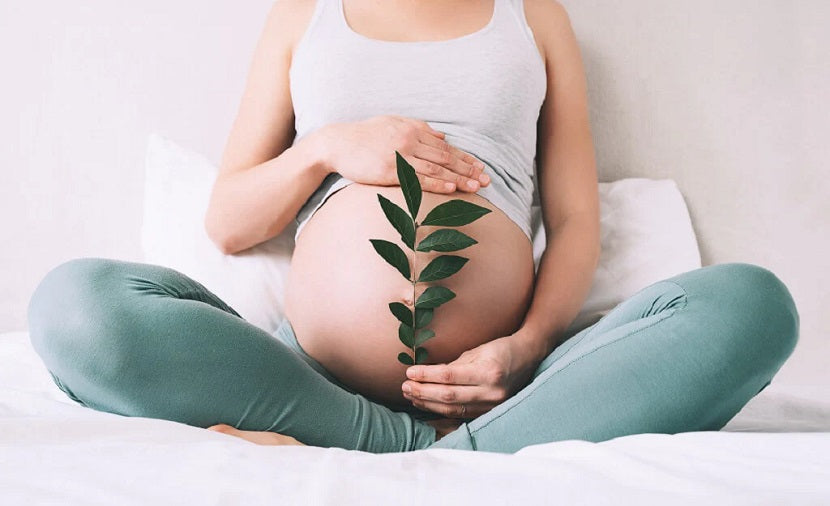How Does Endometriosis Impact Fertility?
By Kimberly Kushner

Between 30%–50% of women with endometriosis struggle with infertility, and 25%–50% of those with fertility issues also have endometriosis. However, endometriosis may not be the primary reason why they are infertile.
On the other hand, many women with endometriosis manage to conceive naturally. Having an endometriosis diagnosis does not necessarily mean that you will be infertile.
Nonetheless, if you are younger than 35, have endometriosis and have been actively trying to conceive for 12 months, you may want to consider seeking help. Women over 35 with endometriosis who have been trying to conceive for at least six months definitely need to seek fertility assistance and advice.
The relationship between endometriosis and fertility
In the case of endometriosis, tissues of the organs within the pelvic cavity change and become distorted. Endometrial growths, chocolate cysts (endometriomas) and adhesions are all common presentations that can cause tissue changes within the pelvis.
- The changes to the pelvic tissues may cause blockages within fallopian tubes. This may result in sperm being unable to reach the egg for fertilisation. Endometriosis can also cause changes to the fallopian tube and prevent it from picking up the egg which has been released from the ovary.
- Endometriomas, more commonly known as chocolate cysts, can distort ovarian tissue and prevent ovulation from occurring. They also prevent the ovulated egg from leaving the ovary.
- Adhesions can cause pelvic organs to be less mobile. They can even cause organs to stick together.
- In endometriosis, there is inflammation within the pelvic cavity. Inflammatory mediators such as interleukin-1β, IL-8, IL-10 and tumour necrosis factor-α can cause issues with the growth and development of follicles.
- Further immune dysregulation can create anti-endometrial antibodies. These auto-antibodies will generally drive implantation issues, resulting in implantation failure.
- Endometriosis can cause luteal phase defects. This refers to defects specifically in the second half of your menstrual cycle which are predominantly governed by progesterone. Progesterone can be lacking or dominated by oestrogen.
- Progesterone resistance is also an occurrence which can affect fertility. The action of progesterone supports proliferation of the endometrium (lining of the uterus) and recruits immune cells which support implantation of the embryo. Without these key actions of progesterone, implantation can fail.
- Women with advanced endometriosis have lower ovarian reserve, low egg and embryo quality and poorer implantation outcomes.
These scenarios are more commonly seen in more severe cases of endometriosis. However, we also know that even in mild endometriosis, fertility can be affected in various ways.

If the anatomy of the reproductive organs are not affected and distorted by blockages or growths, it is important to note that fertility can be affected by the inflammatory mediators that are released by the endometriosis lesions, as outlined above. These mediators and chemicals can significantly impact the communication between the egg and the sperm, potentially affecting fertilisation and implantation.
The conventional approach
From a conventional medical perspective, the main treatment option would involve surgery. A laparoscopic excision specialist will be able to remove your endometriosis, and for some women, this is all that is required. Some women may get pregnant naturally within six months of their surgery. Other women may require additional fertility treatment after their excision—such as IVF—in order to help them conceive.
The naturopathic approach
From a naturopathic perspective, I am very supportive of getting a proper diagnosis and surgery performed by an endometriosis excision specialist. Note that this is different from ablation and is far more superior in removing and treating lesions. By doing this, hopefully you’ll have a ‘clean slate’ to work with. With the help of herbal medicine, nutritional medicine, dietary and lifestyle interventions, along with acupuncture, it may be possible to achieve wonderful results in optimising fertility.

Some of the key treatment goals when working to support fertility outcomes from a naturopathic perspective include:
-
Restoring immune balance
We know that there is significant immune activation and involvement when it comes to fertility and endometriosis.
-
Supporting healthy ovulation and progesterone synthesis
Progesterone possesses an anti-inflammatory action and supports implantation.
-
Reinforcing the gastrointestinal and reproductive microbiome
We know that dysbiosis within the gastrointestinal tract can wreak havoc on hormone balances, especially because a compromised estrobolome—the microflora in the gut responsible for oestrogen metabolism—will compromise oestrogen clearance. This is especially important as endometriosis is a predominantly oestrogen-dominant condition.
-
Fixing microbial imbalances in the digestive tract
These imbalances disrupt healthy immune function, further driving up inflammation systemically. The microbiome in women with endometriosis is often associated with opportunistic pathogens and an abundance of bacteria which are linked to bacterial vaginosis.
-
Regulating immune activation
We also aim to reduce and repair any cytokine impaired gut functions and support healthy oestrogen metabolism, signalling and clearance.
Taking this approach to optimise fertility may be done as adjunctive support treatment whether a woman chooses to undergo conventional assisted reproduction or not. Whichever route she chooses to embark on to optimise fertility, complementary and alternative therapies can help improve her pregnancy outcomes.
REFERENCES:
Basso CG, de Araujo-Ramos AT and Martino-Andrade AJ. (2022). Exposure to phthalates and female reproductive health: a literature review. Reproductive Toxicology. Apr;109:61-79.
Evans MB and Decherney AH. (2017). Fertility and Endometriosis. Clinical Obstetrics & Gynecology, 60(3), pp.497–502.
Jiang I, Yong PJ, Allaire C and Bedaiwy MA. (2021). Intricate Connections between the Microbiota and Endometriosis. International Journal of Molecular Sciences, [online] 22(11), p.5644.
Macer ML and Taylor HS. (2012a). Endometriosis and infertility: a review of the pathogenesis and treatment of endometriosis-associated infertility. Obstetrics and Gynecology Clinics of North America, [online] 39(4), pp.535–549.
Mehedintu C. Plotogea MN, Ionescu S and Antonovici M. (2014). Endometriosis still a challenge. Journal of medicine and life, [online] 7(3), pp.349–57.
Patel BG, Rudnicki M, Yu J, Shu Y and Taylor RN (2017). Progesterone resistance in endometriosis: origins, consequences and interventions. Acta Obstetricia et Gynecologica Scandinavica, 96(6), pp.623–632.
Sarapik et al. (2010). Serum anti-endometrial antibodies in infertile women - potential risk factor for implantation failure. American Journal of Reproductive Immunology (New York, N.Y.: 1989), [online] 63(5), pp.349–357.
Tanbo T and Fedorcsak P. (2017). Endometriosis-associated infertility: aspects of pathophysiological mechanisms and treatment options. Acta Obstetricia et Gynecologica Scandinavica, 96(6), pp.659–667.







Leave a comment
This site is protected by hCaptcha and the hCaptcha Privacy Policy and Terms of Service apply.